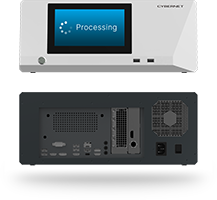Artificial intelligence, or AI, is already making inroads in many sectors of society. For healthcare, its reach influences from using electronic medical records (EMR) to protecting hospital networks from cyberattacks.
Artificial intelligence in medical education, which we're covering today, looks at how it's changing future providers and their training.
Traditional Medical Education
Medical students go through extensive periods of training. A large part focuses on consuming as much information as possible, with much of it memorization-based. Traditional medical education is based around:
- Patient care
- Medical knowledge
- Interpersonal and communication skills
- Practice-based learning and improvement
- Professionalism
- Systems-based practice
Artificial intelligence refers to computer programs and algorithms designed to perform tasks usually done by people. Automating assessment of written responses to feedback on medical image interpretations are just some examples of its use in the medical field.
Artificial intelligence in medical education builds on traditional training methods and adds its spin or direction based on its unique abilities.
Artificial Intelligence Flips Classroom in Medical Education
One such direction is to move away from traditional lectures and memorization of facts. This radical "flipped classroom", advocated by Charles Prober, MD, founding director of the Stanford Center for Health Education, would have medical students learn to solve complex patient cases by:
- Gathering facts and lectures from every available resource (i.e., EMR)
- Work on their own time
- Enter their findings on their medical computers and medical tablets
- Meet with professors and peers in a classroom setting, where they practice problem-solving and data analysis
The approach simulates how medical cases are actually done in the real world. The aim is to develop critical thinking skills instead of memorizing medical facts. Focus is on interacting with data and resources instead of memorization. ChatGPT and similar chatbots would be one of these resources. Just as database searches are a part of a provider's routine, these AI-driven programs can assist medical trainees in finding, synthesizing, and presenting relevant facts. This is far faster than traditional methods, which can be time-consuming and frustrating as they often require searching through multiple sources.
This approach has another advantage. Currently, little time is spent on familiarizing medical students or residents with new technologies such as AI, robotics, and telemedicine. Yet future providers will definitely be using those as well as a broad portfolio of assistive devices. Speech recognition is already automating clinical interview transcriptions. And AI-powered electronic medical record programs are in development that may prompt a provider to ask specific questions based on symptoms. They may even suggest tests and diagnosis. CAD systems aimed at radiologists were partially developed with this goal in mind.
Providers' New Role: Masters of AI
Another reason medical students should study artificial intelligence in their medical education is to get a basic understanding of the underlying principles of the program itself.
Currently, training on the use of EHRs usually consists of ad hoc brief introductory courses. They are typically specific to a particular healthcare group or its hospital. Under this new training regimen, the existing school curriculum would be augmented with knowledge of AI fundamentals, data science, and any raised ethical and legal issues.
Why? The hope is that students can use this fundamental knowledge when current medical equipment gets outdated or replaced. Already, ChatGPT, AI-assisted EMR, and CAD are just a few examples of AI's growing presence in healthcare. Others, like using AI to "hear" medical issues from a person's voice, are coming down the pipeline. Finally, there is the rise of AI-specific computers like medical AI box PCs.
Issues this new curriculum could address:
Course on Overreliance (and how to avoid it)
Providers may become used to the AI's handling many of their job functions like diagnosis and simply treat the AI's output as fact ("automation bias"). They may evaluate patients on their interview and test results and ignore all their physical and emotional states, which could lead to the actual problem.
AI Down (What's next?)
What does one do when the AI ceases to operate? Or is no longer capable of delivering the required services like detecting tumors off an X-ray? Unfortunately, a cybersecurity breach, which is all too common in healthcare, could cripple a hospital and its AI systems in critical moments. Providers will need to know what to do in such eventualities.
AI Hallucination
How to spot and determine when the data used by the AI is incomplete or simply wrong. AI algorithms use information from the EHR, so the knowledge of how to input unbiased data into the EHR is essential. Otherwise, the AI algorithm will likely be biased as well. Worse, it may spew out results that sound convincing ("hallucinate"). Users like providers should have the right to override these results and the ability to notify when AI-driven decisions are incorrect. This has the added benefit of helping the model learn from its mistakes in subsequent training iterations.
Machine Ethics
Finally, the ethical use of artificial intelligence in medical education should be extensively covered. Think about deciding between the quality of life of a terminally ill patient and the length of their life. Providers and patients often make trade-offs when deciding on treatments, with no "one-size-fits-all" approach to patient care.
Closing Thoughts
Artificial intelligence brings its strengths across all industries, healthcare included. AI in medical education can change the training of future providers by following the foot-steps of how a provider actually works in the real world, to understanding how AI works well enough to use it as the aid it's actually meant to be.
Contact an expert at Cybernet if either use is appealing to your medical school. Medical computers and tablets, already in use in hospitals, would further enhance medical students' education on how medicine works at their (future) jobs.
Join the conversation and connect with us on this and other relevant topics - Follow us Facebook, Twitter, and Linkedin.


